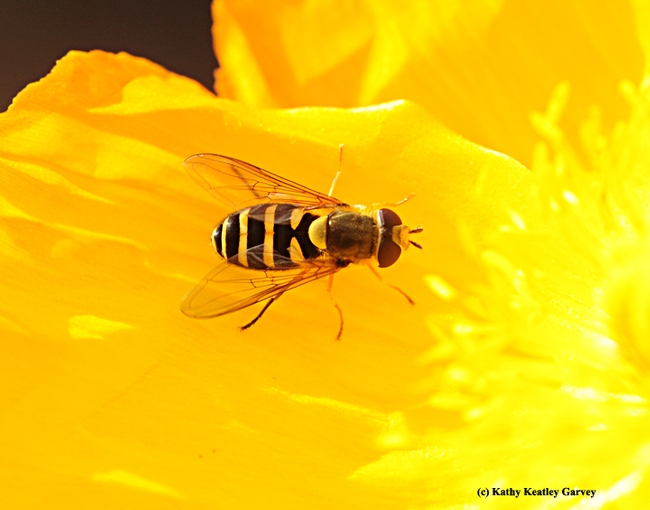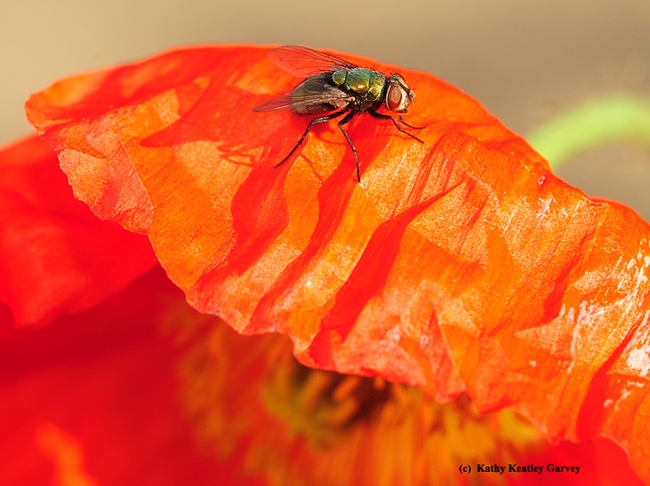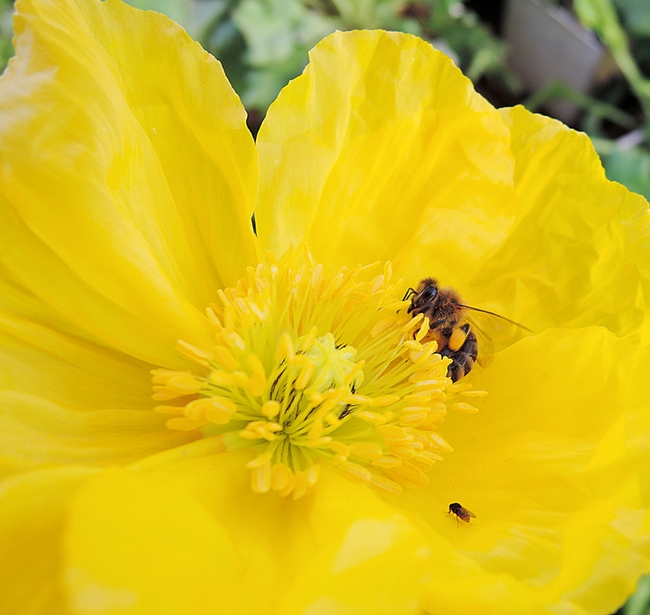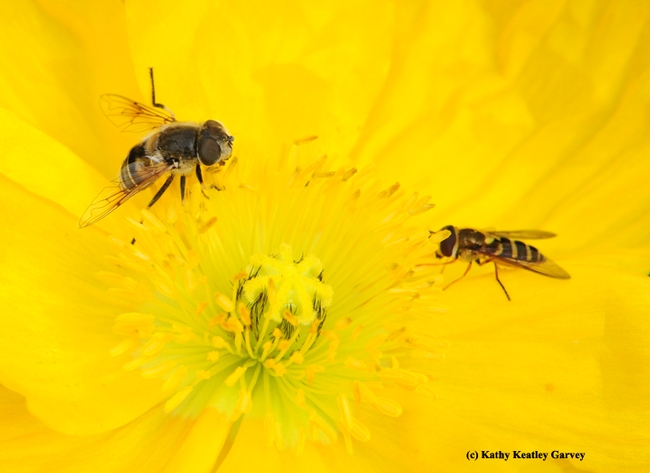It's cool how honey bees and syrphid flies gravitate toward the Iceland Poppy.
It's a winter plant, and frankly, there isn't much to eat out there.
The Iceland Poppy (Papaver nudicaule), a bowl-shaped, papery flower, fills the bill.
The name is a misnomer. It's not native to Iceland. It's from the cooler regions of Europe, Asia and North America, and the mountains of Central Asia. Botanists first described it in 1759.
Like all poppies, they're poisonous. In fact, scientists tell us that all parts of poppies are poisonous. That's because they contain toxic alkaloids. This one, P. nudicaule, contains a benzophenanthidine alkaloid, chelidonine.
Nevertheless, it's a unique, delightful plant. Each flower bursts forth from a hairy, leafless stem that curves like a question mark. When a strong gust of wind further punctuates the plant, the petals drop to the ground. Spent. How fragile are the flowers!
Cultivars can be yellow, salmon, pink, orange, rose, cream and white, as well as tri-colored. The ones in our bee garden are Champagne Bubbles, 15-inch plants in yellow, orange, pink, scarlet, apricot and cream.
Some of the other cultivars bear equally enticing names like Flamenco, Wonderland, Party Fun, Illumination, Meadow Pastels, Victory Giants, Oregon Rainbows and Matador.
Today the honey bees and syrphid flies (aka hover flies or flower flies) jockeyed for position, almost engaging in critter combat in a swirl of autumn color, a veritable kaleidoscope of activity.
Matadors in the Champagne Bubbles...
Attached Images:

A syrphid fly, aka hover fly or flower fly, on an Iceland Poppy. (Photo by Kathy Keatley Garvey)

A green bottle fly soaking up sunshine. (Photo by Kathy Keatley Garvey)

A honey bee gathering pollen. In the foreground: a freeloader fly. (Photo by Kathy Keatley Garvey)

Two syrphids sharing an Iceland Poppy. (Photo by Kathy Keatley Garvey)